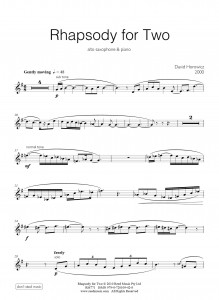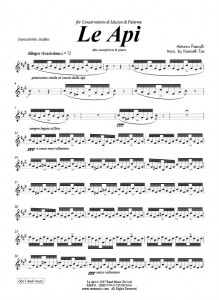Flying Colours
Composed: 2010 Duration: 12 mins.
Instrumentation: Sax Alto & Piano Level E
ISMN: 979-0-720114-39-2 Catalogue: RM842
Level: E Country: Australia
Flying Colours made its first appearance as a concerto for alto saxophone and concert band. Conducted by Captain Brian O. Walden, the work received its world premiere performance on 7th January, 2011 at the 34th International Saxophone Symposium, Washington DC, USA, with Barry Cockcroft as featured soloist with the United States Navy Band.
At Barry’s request, I arranged the concerto for alto saxophone and piano for performance at the 2011 Australian Clarinet & Saxophone Festival, Melbourne, VIC, Australia.
The title of the work is intended to suggest the rapid, free-flowing and often highly chromatic melodies played by the saxophone soloist. The title also reveals something of the inspiration behind the music and my current fascination with all things nautical.
Flying Colours commences with music of a bright and vigorous nature. The strong pulse heard at the introduction is maintained and serves to drive the narrative of the whole work. Weaving in and around the band / piano part, the soloist’s florid melodic lines are composed of ordered, balanced phrases. This is in keeping with the ‘crazy logic’ style of some of my previous works for saxophone in which ‘crazy’ melodic intervals are shaped into ‘logical’ or symmetrical sentences.
I warmly thank Barry Cockcroft and the United States Navy Band for giving the world premiere performance of the work, and also warmly thank Barry Cockcroft and Adam Pinto (rompduo) for their premiere performance of the sax and piano score.
Matthew Orlovich























